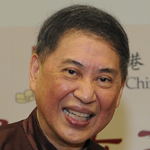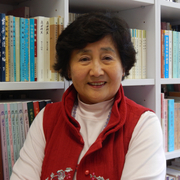- Level Foundation
- Duration 10 hours
- Course by The Chinese University of Hong Kong
-
Offered by

About
This course will focus on the historical and cultural background, literary aesthetics, music, and performance of Kunqu, China’s classical opera. After viewing the lecture videos presented by scholars and renowned maestros in the field of Kunqu, students’ understanding and appreciation of Chinese performing arts, classical literature and traditional culture will be enhanced.Modules
1.1. A brief introduction to Kunqu
1
Videos
- 1.1. A brief introduction to Kunqu
1.2. High points of Kunqu during the late Ming and early Qing dynasties
1
Videos
- 1.2. High points of Kunqu during the late Ming and early Qing dynasties
1.3. The socio-historical background of Kunqu in 16th- and 17th-century China
1
Videos
- 1.3. The socio-historical background of Kunqu in 16th- and 17th-century China
1.4. The Peony Pavilion, its poetry and performance
1
Videos
- 1.4.The Peony Pavilion, its poetry and performance
1.5. From page to stage: The Peony Pavilion as masterpiece
1
Videos
- 1.5. From page to stage: The Peony Pavilion as masterpiece
Quiz
1
Assignment
- Week 1
2.1. A brief introduction to Kunqu music
1
Videos
- 2.1. A brief introduction to Kunqu music
2.2. Musical features of Kunqu melodies
1
Videos
- 2.2. Musical features of Kunqu melodies
2.3. Analytical definition of tune-type: qupai
1
Videos
- 2.3. Analytical definition of tune-type: qupai
2.4. Contrasts between Western opera and Kunqu opera
1
Videos
- 2.4. Contrasts between Western opera and Kunqu opera
2.5. Traditional instruments of Kunqu ensemble: changmian
1
Videos
- 2.5. Traditional instruments of Kunqu ensemble: changmian
Quiz
1
Assignment
- Week 2
3.1. Comparison between the young scholar and the official role-types
1
Videos
- 3.1. Comparison between the young scholar and the official role-types
3.2. Demonstration of the young scholar role-type
3
Videos
- 3.2.1. Singing and speaking of the young scholar role-type
- 3.2.2. Foot work and hand gestures of the young scholar role-type
- 3.2.3. Hand, eye,body, and step combined: "Repartee of Zithers", a scene from The Jade Hairpin
3.3. Demonstration of the young official role-type: "Looking Homeward", a scene from The Shepherd
1
Videos
- 3.3. Demostration of the young official role-type: "Looking Homeward", a scene from The Shepherd
3.4. Demonstration of the great official role-type: "Lamentation before the Statue", a scene from The Palace of Eternal Life
1
Videos
- 3.4. Demostration of the great official role-type: "Lamenting before the Statue", a scene from The Palace of Eternal Life
Quiz
1
Assignment
- Week 3
4.1. Categories of female role-types in Kunqu
1
Videos
- 4.1.1. Categories of female role-types in Kunqu
4.2. Demonstration of the mature female role-type
1
Videos
- 4.2.1. Demonstration of the mature female role-type
4.3. Demonstration of the young noble lady role-type
2
Videos
- 4.3.1."Search for the Dream", a scene from The Peony Pavilion: imaging the romantic mindset of a young woman
- 4.3.2. "Search for the Dream", a scene from The Peony Pavilion: disappointment
4.4. Demonstration of the vivacious young female role-type
3
Videos
- 4.4.1. Benefiting from many masters: Liang Guyin studies "Earthly Desires"
- 4.4.2. Focus on critical points: using eye movement and acting distracted as she recites
- 4.4.3. Pantomime, song, and dance combined: "counting arhats" and escaping down the mountain
4.5. Demonstration of the martial female role-type
2
Videos
- 4.5.1. Equal demands of singing and martial arts in “Borrowing the Plantain Leaf Magic Fan”, a scene from The Journey to the West
- 4.5.2. Innovation in the scene: "belly pain"
Quiz
1
Assignment
- Week 4
5.1. Face paint patterns and costumes various painted face roles
1
Videos
- 5.1. Face paint patterns and costumes various painted face roles
5.2. Use of the beard and eyes in the enactment of Lord Guan
1
Videos
- 5.2. Use of the beard and eyes in the enactment of Lord Guan
5.3. Importance of singing in "Into the Enemy Camp Alone"
1
Videos
- 5.3. Importance of singing in "Into the Enemy Camp Alone"
5.4. Importance of speech and recitation
1
Videos
- 5.4. Importance of speech and recitation
5.5. Movement and facial expression
1
Videos
- 5.5. Movement and facial expression
Quiz
1
Assignment
- Week 5
6.1. Categories of male comic role-types in Kunqu
1
Videos
- 6.1. Categories of male comic role-types in Kunqu
6.2. Demonstration of two monks in "Escape from the Monastery" (young chou) and "Touring the Prayer Hall" (fu chou)
1
Videos
- 6.2. Demonstration of two monks in "Escape from the Monastery" (young chou) and "Touring the Prayer Hall" (fu chou)
6.3. Acrobatic action with lyrical singing: "Shi Qian Steals the Armor"
1
Videos
- 6.3. Acrobatic action with lyrical singing: "Shi Qian Steals the Armor"
6.4. Agility within logic and surprise: excerpt from "Shi Qian Steals the Armor"
1
Videos
- 6.4. Agility within logic and surprise: excerpt from "Shi Qian Steals the Armor"
Quiz
1
Assignment
- Week 6
7.1. Kunqu and Chinese traditional aesthetics
1
Videos
- 7.1. Kunqu and Chinese traditional aesthetics
7.2. The Young Lovers' Edition Peony Pavilion and The New Edition Jade Hairpin: connecting tradition and modernity
1
Videos
- 7.2. The Young Lovers' Edition Peony Pavilion and The New Edition Jade Hairpin: connecting tradition and modernity
7.3. The Young Lovers' Edition Peony Pavilion: innovations in stagecraft
1
Videos
- 7.3. The Young Lovers' Edition Peony Pavilion: innovations in stagecraft
7.4. The New Edition Jade Hairpin: return to classicism, synthesis of graphic and calligraphic arts
1
Videos
- 7.4. The New Edition Jade Hairpin: return to classicism, synthesis of graphic and calligraphic arts
Quiz
1
Assignment
- Week 7
Auto Summary
Discover "The Beauty of Kunqu Opera," an engaging course on Coursera. Delve into the rich history, cultural significance, literary aesthetics, music, and performance of China's classical opera. Taught by esteemed scholars and maestros, this foundational course enhances your appreciation of Chinese performing arts and traditional culture. With a 600-minute duration, it offers Starter and Professional subscription options, making it ideal for arts and humanities enthusiasts.

Prof. Wei Hua 華瑋

Prof. Kenneth Hsien-yung Pai 白先勇

Prof. Lindy Li Mark 李林德


